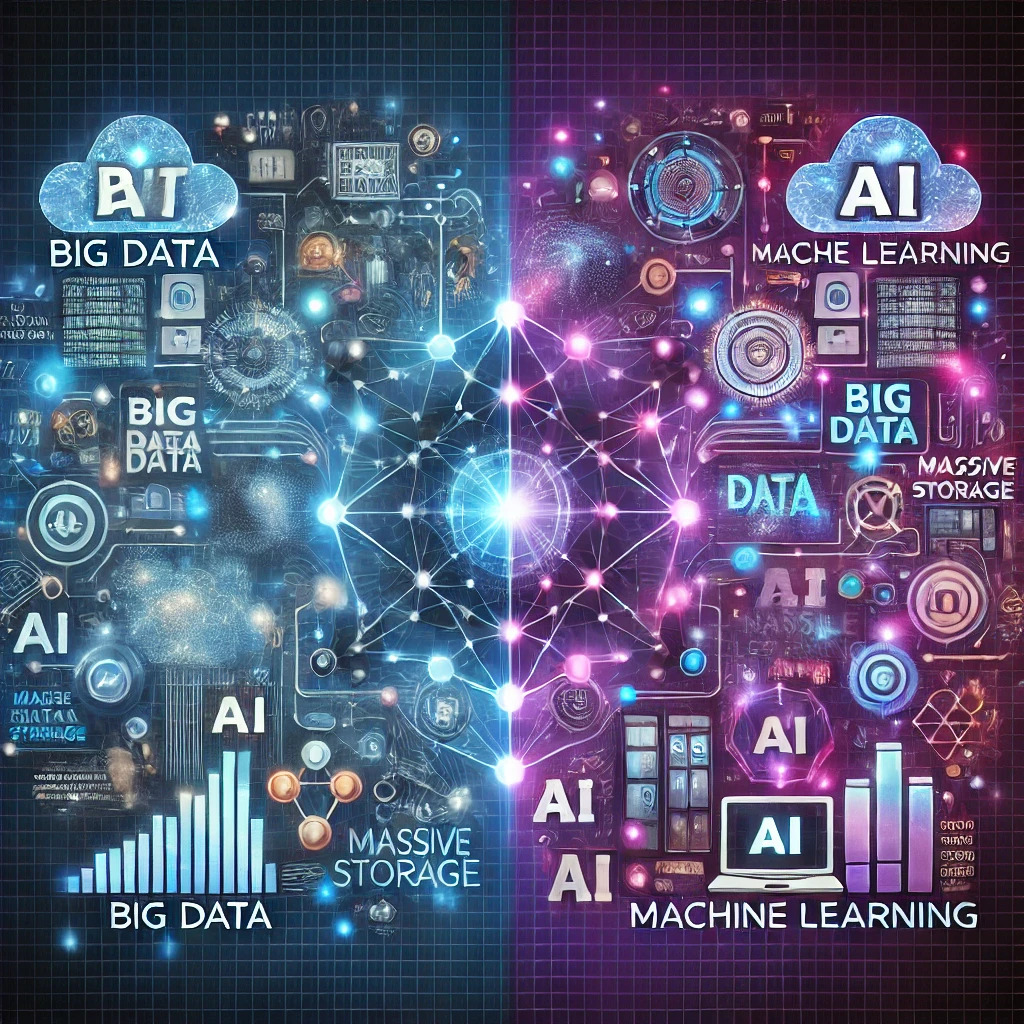In the world of technology, big data and machine learning (ML) are two of the most transformative concepts. While they are often used interchangeably, they serve distinct purposes and have unique characteristics. Understanding the differences and synergies between big data and machine learning is crucial for businesses looking to harness their full potential.
In this article, we’ll explore what big data and machine learning are, how they differ, and how they work together to drive innovation and efficiency.
What is Big Data?
Big data refers to extremely large and complex datasets that cannot be processed using traditional data processing tools. It is characterized by the 3 Vs:
Volume: The sheer amount of data generated.
Velocity: The speed at which data is generated and processed.
Variety: The different types of data (structured, unstructured, and semi-structured).
Big data is used to store, process, and analyze vast amounts of information to uncover patterns, trends, and insights.
What is Machine Learning?
Machine learning is a subset of artificial intelligence (AI) that focuses on building systems that can learn from data and improve over time without being explicitly programmed. It involves:
Training models on historical data.
Making predictions or decisions based on new data.
Improving accuracy through continuous learning.
Machine learning is used for tasks like predictive analytics, image recognition, and natural language processing (NLP).

Key Differences Between Big Data and Machine Learning
| Aspect | Big Data | Machine Learning |
|---|---|---|
| Definition | Large and complex datasets. | Algorithms that learn from data. |
| Purpose | Store, process, and analyze data. | Make predictions or decisions. |
| Focus | Data management and insights. | Pattern recognition and automation. |
| Tools | Hadoop, Spark, data lakes, data warehouses. | TensorFlow, PyTorch, Scikit-learn. |
| Output | Insights, trends, and reports. | Predictive models, classifications. |
How Big Data and Machine Learning Work Together
While big data and machine learning are distinct, they are highly complementary. Here’s how they work together:
Data Collection and Storage:
Big data technologies like Hadoop and data lakes collect and store massive datasets.
Machine learning algorithms require large amounts of data to train effectively.
Data Processing:
Big data tools like Apache Spark process and clean data for analysis.
Clean, structured data is essential for accurate machine learning models.
Data Analysis:
Big data analytics identifies patterns and trends in the data.
Machine learning uses these patterns to build predictive models.
Insights and Automation:
Big data provides the foundation for insights.
Machine learning automates decision-making based on those insights.
Examples of Big Data and Machine Learning in Action
Healthcare:
Big Data: Collects patient records, medical images, and sensor data.
Machine Learning: Predicts disease outbreaks, diagnoses conditions, and recommends treatments.
Retail:
Big Data: Tracks customer behavior, sales, and inventory.
Machine Learning: Personalizes recommendations, optimizes pricing, and predicts demand.
Finance:
Big Data: Analyzes transaction data and market trends.
Machine Learning: Detects fraud, assesses risk, and automates trading.
Manufacturing:
Big Data: Monitors equipment performance and supply chain data.
Machine Learning: Predicts equipment failures and optimizes production.
Challenges in Combining Big Data and Machine Learning
Data Quality:
Poor-quality data can lead to inaccurate machine learning models.
Scalability:
Processing large datasets requires scalable infrastructure.
Skill Gaps:
Implementing big data and machine learning requires specialized skills.
Integration:
Combining big data tools with machine learning frameworks can be complex.
Future Trends: The Convergence of Big Data and Machine Learning
AI-Driven Analytics:
Machine learning will play a bigger role in analyzing big data for real-time insights.
Edge Computing:
Combining big data and machine learning at the edge (e.g., IoT devices) for faster decision-making.
Automated Machine Learning (AutoML):
Simplifying the process of building machine learning models using big data.
Ethical AI:
Ensuring ethical use of big data and machine learning to avoid bias and privacy issues.
Conclusion
Big data and machine learning are two sides of the same coin. While big data focuses on managing and analyzing large datasets, machine learning focuses on extracting insights and automating decisions. Together, they enable businesses to unlock the full potential of their data, driving innovation, efficiency, and growth.
Whether you’re just starting your data journey or looking to scale your efforts, understanding the differences and synergies between big data and machine learning is key to success. Embrace these technologies today and transform your business for the future!
Ready to leverage big data and machine learning for your business? Contact us to learn how we can help you build a data-driven strategy that delivers results.